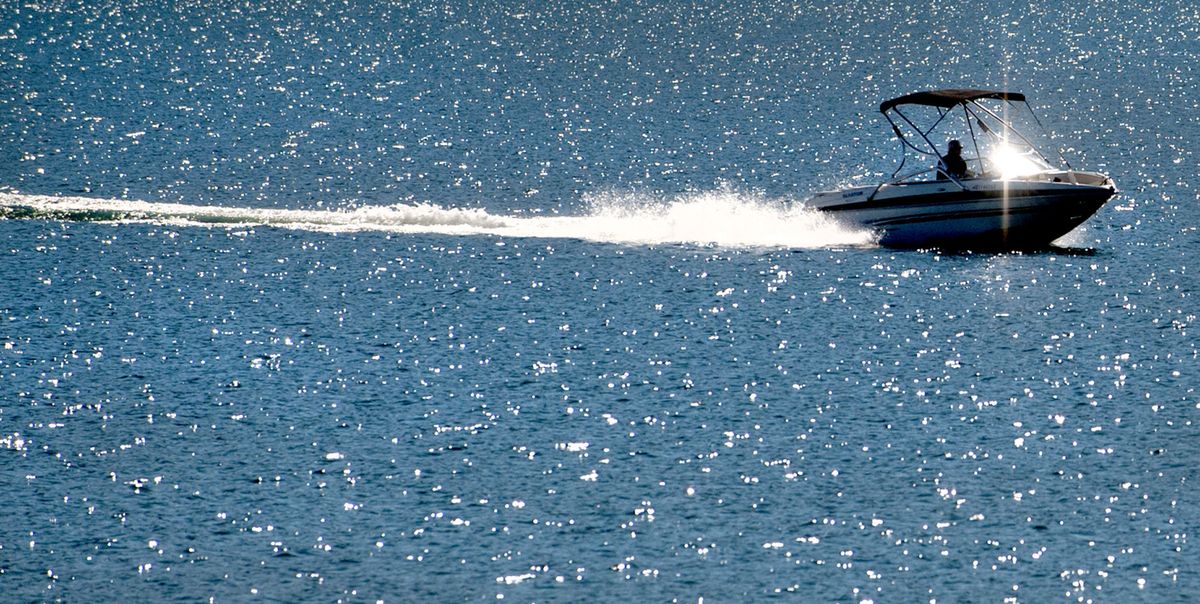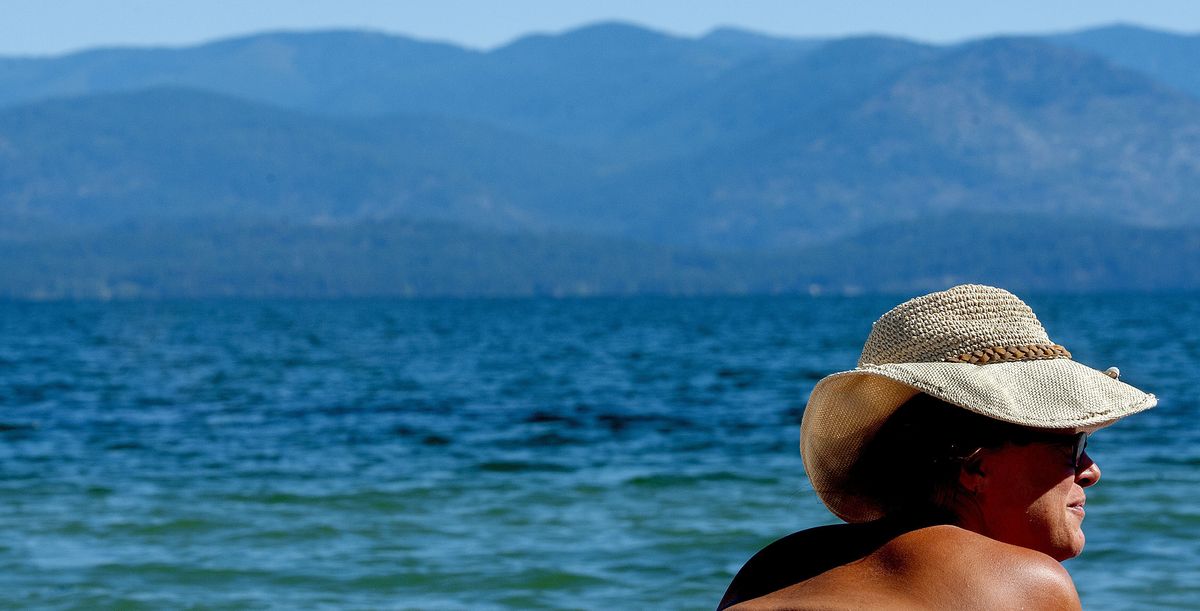Bull trout protection plan worries boaters on Lake Pend Oreille
A boat cuts through Lake Pend Oreille in Sandpoint, Idaho, on Monday. Locals want the lake levels kept high through September for boating, but there are competing downstream interests. (Kathy Plonka)Buy a print of this photo
Dennis Hall spent Saturday afternoon on Lake Pend Oreille, launching his 28-foot cabin cruiser from Sandpoint and ferrying friends across the lake to dinner.
With blue skies and temperatures in the 70s, it was an ideal day to be on the water. “I even got a little sunburn,” said Hall, a Coeur d’Alene resident.
For the past dozen years, local residents have worked with the Army Corps of Engineers to keep Lake Pend Oreille’s water levels high through September, extending the boating season on Idaho’s largest lake.
But a proposal to draft the lake in late summer, providing water releases for federally protected bull trout downstream, has Hall and other boaters worried. Even a 1-foot drop in lake levels affects the ability of property owners in shallow bays to use their docks, said Ford Elsaesser, chairman of the Pend Oreille Basin Commission, which represents local stakeholders’ interests.
“Our goal is to protect our recreational season,” he said. “You have all these beautiful days like today, which is the best possible day to be out on the lake.”
The issue has attracted a flurry of interest, pitting boaters against fisheries interests.
More than 4,000 people signed petitions asking federal agencies to reconsider future water releases. Gov. Butch Otter wrote a letter to the Bonneville Power Administration and the U.S. Army Corps of Engineers last month telling the agencies that it’s time to craft a new plan for lake levels that prioritizes recreational uses and protects tourism interests.
“There are many different views and values on this matter,” said Bill Maslin, BPA’s fish and wildlife manager. “We recognize those releases are very sensitive and we’re trying to work within that context.”
Maslin said talks are underway among the state, local stakeholders and tribal interests, with the goal of reaching a consensus on future lake levels.
Meanwhile, no changes in lake operations are planned for this September, said Amy Reese, a water management chief for the Army Corps. Lake levels will follow normal drawdown patterns, which include a gradual, 2 ½-foot drop this month to help prepare the lake for its winter drawdown, she said.
The bull trout issue emerged two years ago when the federal agencies signed an agreement with the Kalispel Tribe to protect native fish affected by dams in the Pend Oreille system. The pact mirrored the earlier Columbia Basin fish accords between the federal government and the Lower Columbia tribes, which focused on restoring salmon and steelhead runs.
Bull trout, which are threatened across the West, used to have a population of about 10,000 in the Pend Oreille River and its tributaries. For thousands of years, the speckled trout were an important food source for the Kalispel Tribe, said Deane Osterman, the tribe’s natural resources director.
“They got pretty big, they traveled long distances and they had predictable runs in the fall,” Osterman said.
Lake Pend Oreille still holds the world bull trout record: a 32-pounder caught in the lake in 1949.
But populations started dwindling in the 1950s, when Albeni Falls Dam was built without fish passage. Bull trout that used to migrate to the lake get stuck below the dam in the Pend Oreille River, where water temperatures soar into the 70s in late summer. The cold-water trout don’t survive that kind of heat wave, Osterman said. They were also cut off from Lake Pend Oreille, where the trout grew to maturity before returning to creeks to spawn.
Restoring fish passage at Albeni Falls Dam would solve both problems by allowing bull trout to migrate back upstream to the lake, he said. But construction of a fish passage facility is still years away.
The Army Corps plans to release a cost study for fish passage at Albeni Falls Dam in the spring of 2016, said David Cook, a corps program manager. Getting federal funding for the construction would take at least two more years, and designing and building the fish passage is another multiyear process, he said.
Releasing water from Lake Pend Oreille is a stopgap measure until the dam’s fish passage is done, federal officials said. Early results from computer modeling indicate that bull trout would benefit from the releases, said the Army Corps’ Reese.
The modeling was based on water releases after Labor Day. The modeling also stayed within the parameters of the corps’ current 2 ½-foot lake drawdown in September, she said.
But the accord with the Kalispel Tribe also discusses potential water releases in August. That’s alarmed recreation advocates, who say Lake Pend Oreille doesn’t reach full pool until July, leading to an already short boating season.
“We’d like to get some permanent definition of lake levels going forward, or at least a long-term agreement, so we don’t have this concern every year,” said Elsaesser, the Pend Oreille Basin Commission chairman.
During his Saturday outing, Hall said he saw plenty of boat traffic on Lake Pend Oreille.
“There were a lot of pleasure cruisers, fishermen and some sailboats,” said Hall, who’s a board member of a newly formed organization called Save Pend Oreille, which organized the petition drive for higher lake levels.
“It was really nice on the lake.”

